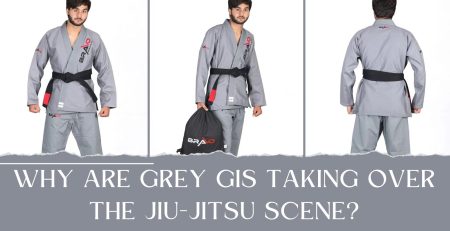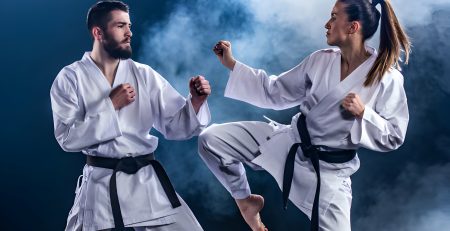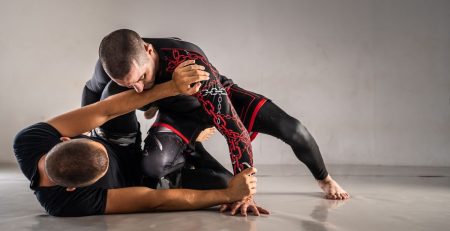The Ultimate Guide to BJJ Gi Fit – Finding the Perfect Gi for You
Table of Contents:
- Introduction
- Understanding the Importance of Proper Fit
- Key Considerations for a Well-Fitting BJJ Gi
- Jacket Fit
- Pants Fit
- Sleeve Length
- Overall Comfort
- How to Determine Your BJJ Gi Size
- Using a Size Chart
- Trying On Different Sizes
- Considering Brand Variations
- Tips for Maintaining Your BJJ Gi Fit
- Proper Washing and Care
- Checking for Shrinkage
- Reevaluating Fit Over Time
- Conclusion
Introduction:
In the world of Brazilian Jiu Jitsu (BJJ), the significance of a well-fitted gi cannot be overstated. Beyond being a mere uniform, the gi serves as an extension of the practitioner, impacting performance, comfort, and even mindset during training and competition. Understanding how a BJJ gi should fit is not just a matter of aesthetics; it’s a fundamental aspect of optimizing one’s training experience. In this comprehensive guide, we will explore the intricacies of achieving the perfect fit for your BJJ gi, delving into key considerations, sizing methods, and maintenance tips to ensure an optimal training journey.
Understanding the Importance of Proper Fit:
The fit of your BJJ gi plays a pivotal role in your ability to execute techniques seamlessly and effectively. A well-fitted gi allows for unrestricted movement, enabling practitioners to flow from one position to another with ease. Conversely, an ill-fitting gi can impede movement, restrict range of motion, and hinder the execution of techniques, ultimately detracting from the training experience. Beyond functionality, the fit of the gi also influences comfort and confidence on the mat, impacting the practitioner’s mindset and overall performance.
Key Considerations for a Well-Fitting BJJ Gi:
Jacket Fit:
The jacket of a BJJ gi should strike a delicate balance between snugness and freedom of movement. When assessing jacket fit, practitioners should pay attention to several key areas, including the torso and sleeves. The torso should fit comfortably, allowing the lapels to overlap without causing discomfort or restriction. Additionally, practitioners should ensure that the sleeves allow for unrestricted movement of the arms, facilitating techniques such as grips, arm bars, and chokes.
Pants Fit:
Similar to the jacket, the pants of a BJJ gi should offer a balance of comfort and mobility. The waistband should sit securely at the waist without digging in or sliding down during training. Practitioners should also consider the fit around the hips and thighs, ensuring that the pants allow for full range of motion without feeling excessively loose or baggy. Additionally, the length of the pants is a crucial factor to consider, with the hems ideally resting just above the ankles to prevent tripping or interference during movement.
Sleeve Length:
Proper sleeve length is essential for both functionality and aesthetics in BJJ. Sleeves that are too long can provide opponents with excess material to grip, while sleeves that are too short may restrict movement and limit technique execution. When assessing sleeve length, practitioners should ensure that the sleeves extend to approximately the wrist joint when the arms are fully extended. This optimal length allows for a balance between coverage and mobility, facilitating effective technique execution while minimizing the risk of opponent grips.
Overall Comfort:
Beyond specific measurements and dimensions, overall comfort is a critical consideration when evaluating the fit of a BJJ gi. A well-fitted gi should feel comfortable and non-restrictive throughout training sessions, allowing practitioners to focus on technique and skill development without distraction. Factors such as fabric texture, seam construction, and design features can all contribute to the overall comfort of a gi, enhancing the training experience and promoting confidence on the mat.

If you’re curious about the significance of different BJJ gi colors and their meanings, explore the article discussing BJJ Gi Colors.
How to Determine Your BJJ Gi Size:
Using a Size Chart:
One of the most common methods for determining BJJ gi size is to consult a size chart provided by the manufacturer or retailer. These size charts typically outline the measurements for each gi size, including height, weight, chest, and waist circumference. By comparing your measurements to the size chart, you can identify the most suitable size for your body type and dimensions.
Trying On Different Sizes:
While size charts provide a helpful starting point, trying on different sizes of gis can offer valuable insight into the best fit for your body. If possible, visit a local BJJ gear store or attend a gi fitting event to try on gis in various sizes and styles. Pay attention to how each size feels and moves during dynamic movements such as squats, lunges, and arm circles, as this will help you assess comfort and mobility.
Considering Brand Variations:
It’s important to recognize that sizing may vary between different BJJ gi brands, with each brand offering its own unique sizing specifications and fit characteristics. Before making a purchase, familiarize yourself with the sizing variations of different brands and consider how they may align with your body type and fit preferences. Some brands may offer specific sizing recommendations based on body type or fit style, so be sure to explore these options when selecting a gi.

For comprehensive details on finding the right size for your BJJ gi, check out the article on the BJJ gi size chart.
Tips for Maintaining Your BJJ Gi Fit:
Proper Washing and Care:
To preserve the fit and quality of your BJJ gi, it’s essential to follow proper washing and care instructions. Always wash your gi in cold water to prevent shrinkage and minimize color fading. Use a mild detergent and avoid bleach or harsh chemicals that can damage the fabric. Additionally, turn your gi inside out before washing to protect any patches or embroidery from abrasion.
Checking for Shrinkage:
After washing your gi, check for any signs of shrinkage, particularly around the sleeves, pant legs, and waistband. If you notice significant shrinkage, consider adjusting your washing routine or investing in pre-shrunk gis to minimize further changes in size. Periodically reevaluate the fit of your gi over time to ensure that it continues to meet your comfort and performance needs.
Reevaluating Fit Over Time:
As you continue to train and wear your BJJ gi, it’s essential to periodically reassess its fit and comfort level. Over time, factors such as stretching, shrinking, and wear and tear can impact the fit and performance of your gi. Pay attention to any changes in fit, such as loosening or tightening of fabric, and make adjustments as needed to maintain optimal comfort and functionality.

Additionally, if you’re looking for tips on how to properly care for and wash your BJJ gi to maintain its quality and longevity, refer to the article on How To Wash BJJ Gi.
Conclusion:
Achieving the perfect fit for your BJJ gi is a multifaceted process that requires careful consideration of various factors, including jacket fit, pants fit, sleeve length, and overall comfort. By prioritizing functionality, mobility, and comfort, practitioners can ensure that their gi enhances rather than hinders their training experience. Whether consulting size charts, trying on different sizes, or exploring brand variations, finding the right fit is essential for maximizing performance and confidence on the mat. With proper maintenance and periodic reevaluation, practitioners can enjoy a well-fitted gi that supports their training goals and enhances their journey in Brazilian Jiu Jitsu.
FAQs Related to BJJ Gi Fit:
Q1. Why is it important for a BJJ gi to fit properly?
A: A well-fitted BJJ gi is essential for optimal performance and comfort during training and competition. Proper fit ensures unrestricted movement, facilitates technique execution, and enhances overall confidence on the mat.
Q2. How should the jacket of a BJJ gi fit?
A: The jacket of a BJJ gi should fit snugly but allow for freedom of movement. The lapels should overlap comfortably without feeling restrictive, and the sleeves should allow for full extension of the arms without excessive tightness.
Q3. What factors should I consider when determining my BJJ gi size?
A: When determining your BJJ gi size, consider factors such as height, weight, chest circumference, and waist size. Consult size charts provided by manufacturers and retailers, and consider trying on different sizes to find the best fit for your body type.
Q4. How do I know if the pants of my BJJ gi fit properly?
A: The pants of a BJJ gi should offer a balance of comfort and mobility. The waistband should sit securely at the waist without digging in or sliding down, and the length of the pants should end just above the ankles to prevent tripping or interference during movement.
Q5. What should I do if my BJJ gi shrinks after washing?
A: If your BJJ gi shrinks after washing, consider adjusting your washing routine to minimize further shrinkage. Wash your gi in cold water and avoid using bleach or harsh chemicals. Additionally, periodically check for signs of shrinkage and reevaluate the fit of your gi over time.
Q6. Can I hem my BJJ gi pants if they are too long?
A: Yes, you can hem your BJJ gi pants if they are too long. However, it’s essential to carefully measure and mark the desired length before hemming to ensure an even and professional-looking finish. Alternatively, some brands offer pre-shrunk gis with shorter pant lengths for individuals with shorter inseams.
Q7. How often should I reevaluate the fit of my BJJ gi?
A: It’s recommended to periodically reevaluate the fit of your BJJ gi, especially after washing or prolonged use. Pay attention to any changes in fit, such as loosening or tightening of fabric, and make adjustments as needed to maintain optimal comfort and performance.
Q8. What should I do if I’m between sizes according to the size chart?
A: If you’re between sizes according to the size chart, consider trying on both sizes to determine which one fits best. Pay attention to how each size feels and moves during dynamic movements such as squats and lunges, and choose the size that offers the best balance of comfort and mobility.













Leave a Reply
You must be logged in to post a comment.